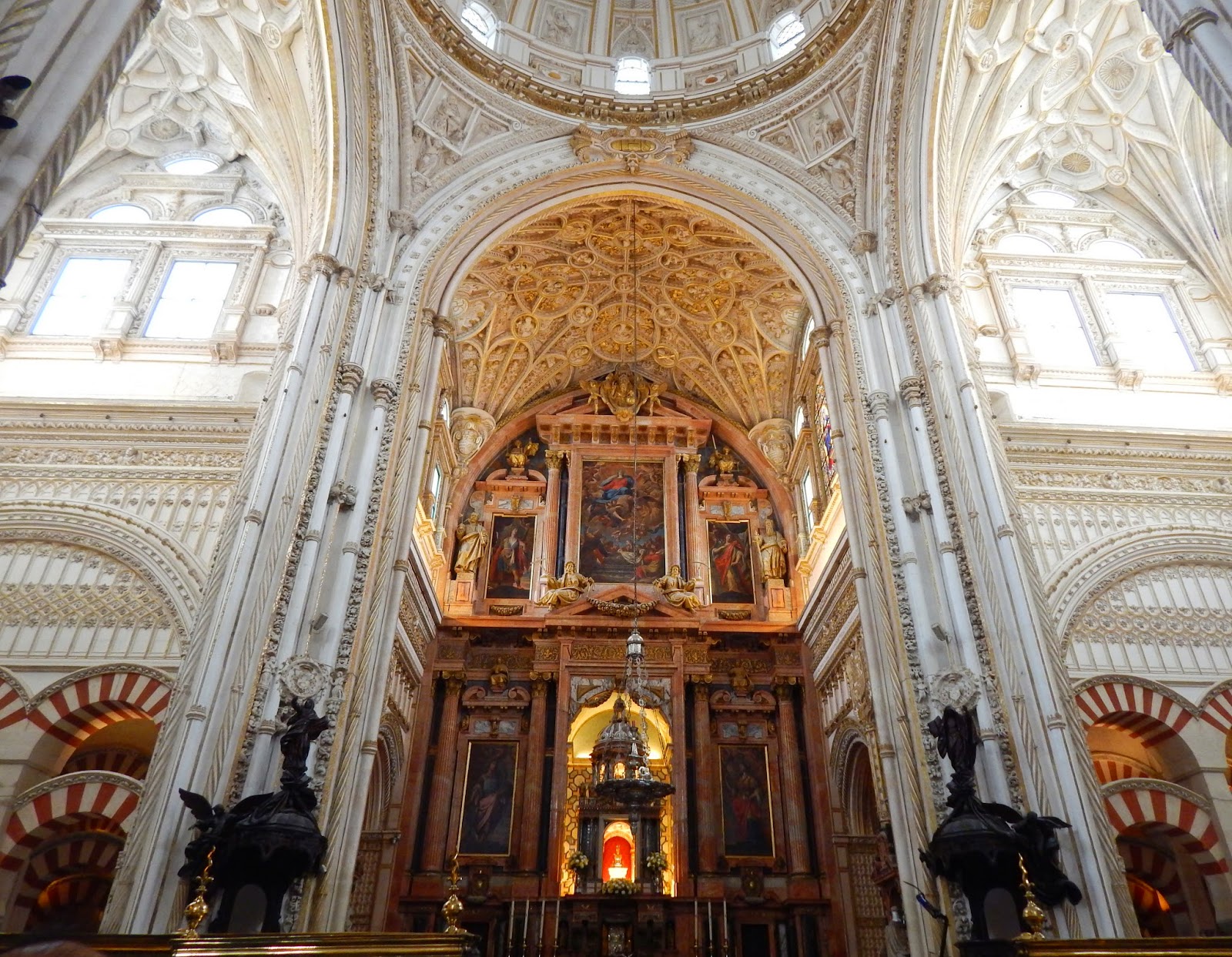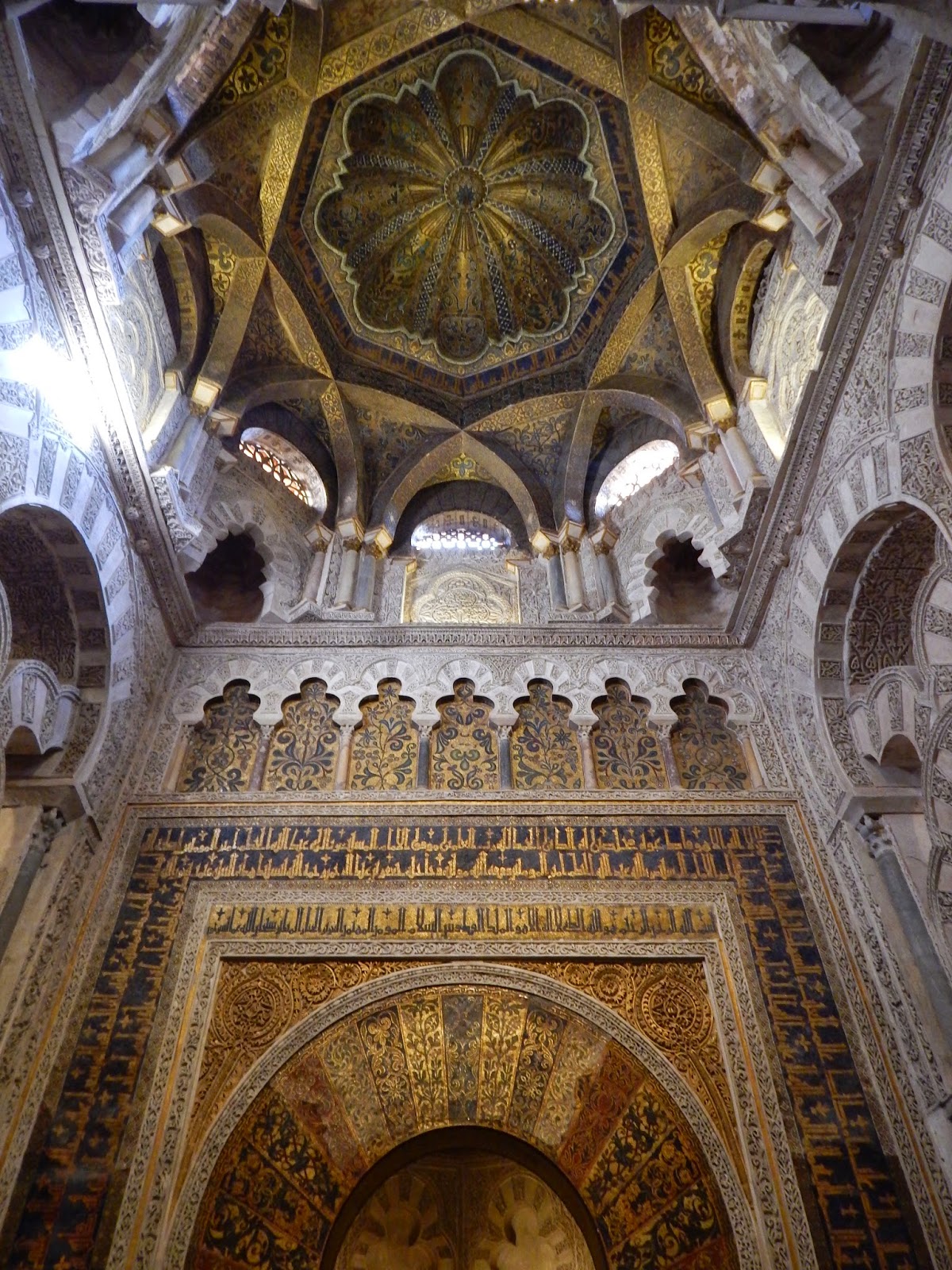Well it's the last couple days of my study abroad program in spain and I'm trying to catch up on all my last posts. I still have like a little over two weeks in Spain however. My group went to Sevilla and Córdoba together for a three day weekend. I got a migraine the second day of Sevilla so I only have a little about it. Luckily my parents and I are going together so I didn't push to go when I didn't feel well. Above is the main place we went when we arrived in Sevilla: Plaza España. PICTURES CANNOT DO IT JUSTICE. In fact, I couldn't get all of the plaza structure in one picture. Above is half of it. And that doesn't count the park area as well. Best part? It's free. There is a little manmade river you can canoe through there as well (very cute and picturesque). I feel like Europe invented the "river walk" idea between Spain, London, and Paris. Sevilla has the Guadalquivir river. It is the only navigable river in Spain. In this plaza, its a little manmade one but very cute.
You'll notice there is fencing and bridges everywhere in the plaza. ALL of it is actual pottery. I've never seen anything like it. I didn't even know it was real until I saw a place where someone had broken a part of it. And we think Spanish plates are pretty.
I tried to back up to get a picture of all of it…but as you can see that wasn't possible and we didn't have very much time since the bus was waiting for us.
I quickly learned why it is called "Plaza de España", because it depicts the unification of Spain from tiny kingdoms into modern Spain. Here is the tile painting of the famous painting of the Moorish Sultan giving the key of the Alhambra (literally giving the "key to the city") to the Reyes Católicas (Isabel and Ferdinand). It is one of the most famous paintings of the royal couple. It is the painting representing the addition of Granada to Spain.
There is a bullring in Sevilla
We were walking along the river and the orange trees are famous in Sevilla. They line the streets everywhere.
Another famous sight: el Torre del Oro. This is from the days of the Moors when Sevilla was part of their Caliphate like Granada.
Picture of the river (el rio grande). Even though Sevilla is in Andalucia, its architecture is completely different than Granada. Sevilla is very colorful. All the buildings are different colors like below.
And on to Córdoba (¡Vamos!)!
Once again…the Guadalquivir river. There is a really pretty pedestrian bridge from the old part of the town to the new part where most of the hotels are. It is a lot like Toledo in that it is a tourist town. However, what can you expect when it has one of the most famous architectural works in the world? It is the ONLY place with a Mezquita that has a Cathedral inside. When all the others mesquitas were torn down, this one was allowed to stand. However, a cathedral was built inside it since after all, the christians did win.
Behold, La Mezquita de Córdoba

When you step inside the Mezquita, there is a big patio (i feel like patio is a bad word since it is HUGE) but anyway…there are a bunch of orange trees that have little ruts dug that connect them all so that water was irrigated to them. In this patio, the bell tower was rung five times a day to signal the muslims to gather in the patio to pray.

Notice the water…..shows prosperity and wealth remember?
Once you step inside, you see all the candy-striped towers the Mezquita is famous for (all 870 of them). Not every part of the building is the same age. Each area was one century apart and it began in the 8th century. Some arches were brick, others were painted like below. Some columns were created for the project while others were recycled from Roman structures. Unfortunately I had a very difficult time taking pictures in the very old parts with the original recycled Roman columns, remember how Greek and Roman knowledge survived? (the west rediscovered it in the middle east). The lighting was all original, or to the taste of it since the nasty Napoleon ransacked the place for its gold items when he conquered Spain. The lighting was so dim that my camera couldn't handle it.
Anyways the picture above is in an area where I could finally take good pictures. There are many little areas in the the building called "capillas" which means chapels. There are 45 little chapels in the structure.
Mitchell, I'm not sure which dome you were saying was revolutionary, but here is the original dome from the Mezquita.
And then we entered the cathedral part! (the second dome, for you darling)

Below are all pictures you will not see in any other religious structure in the world. You have the melding of both a mosque and a cathedral into one. You notice the alter and then on the sides the candy-cane arches.

While walking around during free time I saw this Alcazar de los Reyes Católicas. This was their palace when they stayed in the city. I hope to go there with my parents when we go to Córdoba

And then walking on the bridge, you can see the tower on the other side.
 There was a very prominent Jewish community in Córdoba, but Ferdinand and Isabella had a habit of coming into a newly conquered area and commencing clean up projects (my politics teacher here argues this sentiment of fear towards foreigners expands to racism still very strong in Spain). Unfortunately, the Sephardic Jews of Spain were told to convert or leave, and thus the Spanish Inquisition began to test the new converts's sincerity. Their area is Calle de los Judios ("The Jews' Street") and is now a UNESCO World Heritage Site. It is very beautiful with lots of cute shops, restaurants, and houses that have these patio areas inside with the classic spanish tiles and such. Very traditional Spain.
There was a very prominent Jewish community in Córdoba, but Ferdinand and Isabella had a habit of coming into a newly conquered area and commencing clean up projects (my politics teacher here argues this sentiment of fear towards foreigners expands to racism still very strong in Spain). Unfortunately, the Sephardic Jews of Spain were told to convert or leave, and thus the Spanish Inquisition began to test the new converts's sincerity. Their area is Calle de los Judios ("The Jews' Street") and is now a UNESCO World Heritage Site. It is very beautiful with lots of cute shops, restaurants, and houses that have these patio areas inside with the classic spanish tiles and such. Very traditional Spain.

While walking on the route, I found the Department of Philosophy and Letters for their university :D. My major is Letters, but their building looks cooler than ours at OU.
Anyways I had a great time on the trip and as you can see each city here, and throughout Spain, is very unique. Spain is extremely diverse even though it is such a small country because it was originally a bunch of little countries. My next post is about Ronda and then I'll try to have a couple more about general life here before I go.


























































